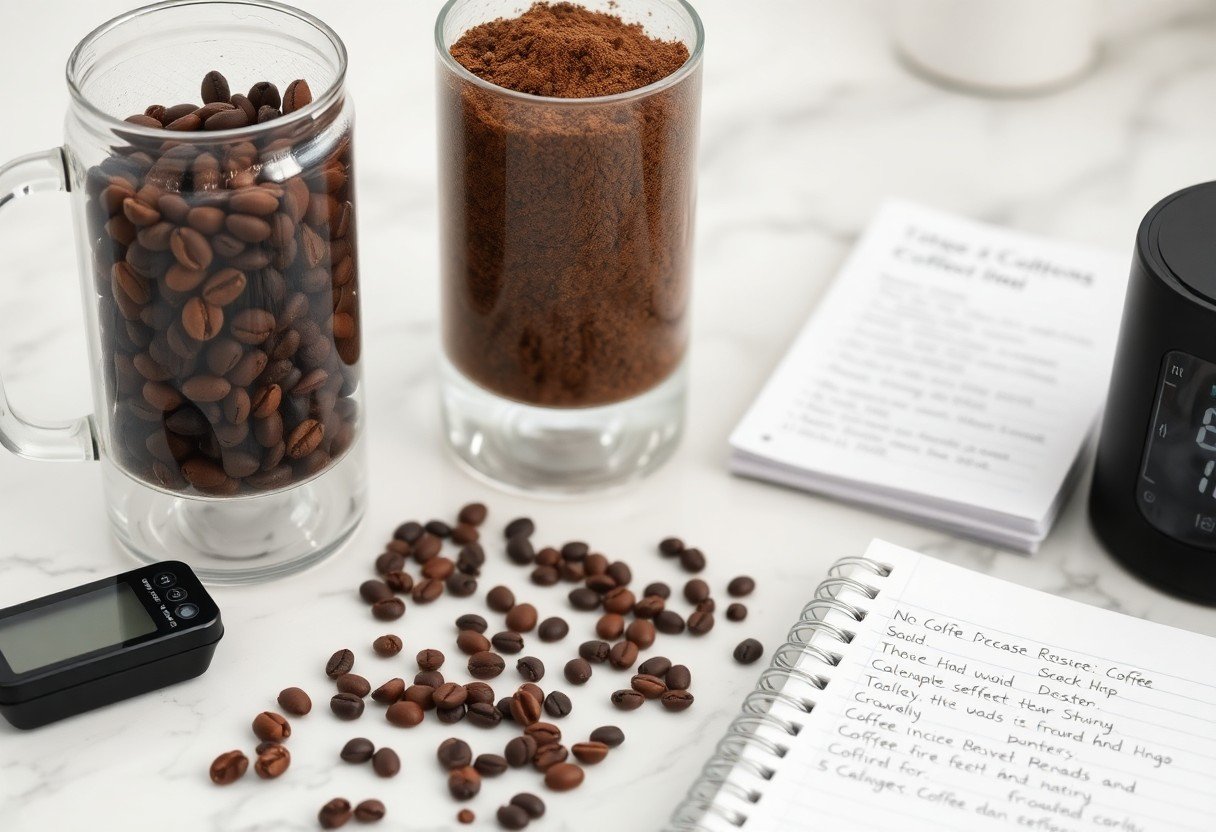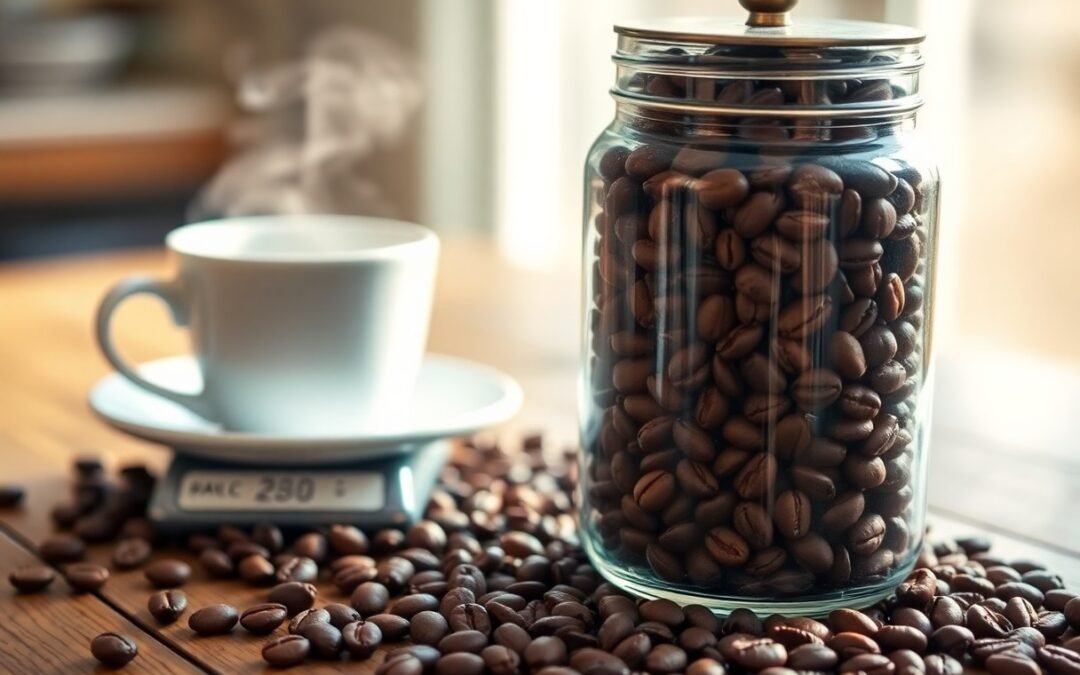There’s a fine line between enjoying the rich, bold flavors of freshly brewed coffee and experiencing a dull, flat taste as time goes on. Understanding how long your brewed coffee beans can maintain their essence is important for elevating your coffee experience. In this post, you’ll discover valuable insights into the factors that affect coffee longevity, including storage tips, ideal consumption times, and signs that your coffee is past its prime. By the end, you’ll be equipped with the knowledge to make every cup of coffee a delightful experience.

The Science of Coffee Longevity
Understanding the factors contributing to the longevity of your brewed coffee helps you appreciate and preserve its unique essence. Several key elements, including chemical reactions and temperature regulation, play significant roles in determining how long that delicious cup will maintain its flavor profile. Let’s examine deeper into these scientific aspects to maximize your brewing experience.
Chemical Changes After Brewing
Once brewed, your coffee undergoes various chemical transformations that impact flavor. The oxidation process begins immediately, leading to a decline in flavor quality. Components such as oils and acids start to break down, resulting in the diminishing freshness of your coffee. This transformation typically starts within minutes of brewing, signaling you to consume it soon for optimal taste.
The Role of Temperature and Time
Temperature and time are critical factors in preserving your coffee’s flavor. High temperatures can accelerate the oxidation process, while cooler temperatures might slow it down. Ideally, coffee should be consumed shortly after brewing, as the sweetest and most complex flavors emerge during the first 30 minutes. Beyond this window, keeping your coffee hot can result in over-extraction, leading to bitterness.
Factors Influencing Longevity
| Factor | Impact on Longevity |
|---|---|
| Temperature | Higher temperatures speed up oxidation. |
| Time | Flavor profiles change dramatically over time. |
| Storage Method | Air-tight containers can slow degradation. |
To maintain your coffee’s quality, be mindful of how you store it and the temperature at which you keep it. Brewed coffee left at room temperature can lose much of its complexity and flavor in under an hour. However, if kept in a thermos or insulated container, the heat may be sustained longer, but balancing retention and flavor is necessary to prevent unwanted bitterness. Using a thermometer can help you ensure your coffee stays within a desirable temperature range for a more enjoyable experience.
Temperature and Time Effects
| Effect | Description |
|---|---|
| Hot Coffee | Initially flavorful, but can turn bitter within an hour. |
| Cool Coffee | May retain some character but can become flat. |
| Stored Coffee | Develops sour notes as volatile compounds evaporate. |
Factors Impacting Flavor Retention
Multiple elements can significantly affect the flavor retention of your brewed coffee beans. Understanding these factors enables you to optimize the longevity of their delightful essence. Consider the following:
- Exposure to light
- Air circulation
- Moisture levels
- Temperature fluctuations
- Type and quality of the container used
The quality of your coffee experience relies heavily on how well you manage these variables in your storage practices.
The Effects of Exposure to Air
When coffee beans are exposed to air, oxidation occurs, leading to a rapid decline in flavor and aroma. This process not only diminishes the freshness but can also introduce off-flavors. Beans should be stored in airtight containers to minimalize the interaction with air and retain that coveted taste you cherish in every sip.
Container Choices: Best Practices for Storage
Selecting the right container can make a significant difference in preserving the integrity of your coffee beans. Opt for opaque, airtight containers made of materials like ceramic, glass, or vacuum-sealed options to shield against light and air. Keep these containers in a cool, dark place away from any heat sources. Avoid clear containers, as they allow light penetration, and refrain from using plastic bags, which often allow air seepage. By focusing on these best practices, you’ll prolong the freshness and delightful essence of your brewed coffee, enhancing your daily ritual.
Optimal Lifespan for Brewed Coffee
Your freshly brewed coffee achieves its peak flavor within the first 30 minutes to an hour after brewing. After that window, exposure to air, temperature changes, and even ambient odors can start to alter its profile. Ideally, brewed coffee should be consumed immediately, but if you can’t, aim to enjoy it within two hours. Beyond that, the essence may be compromised, leading to a lackluster cup that fails to deliver the vibrant notes you initially savored.
Daily Freshness versus Long-Term Use
Choosing between daily freshness and long-term use boils down to your brewing habits and preferences. Freshly brewed coffee is best enjoyed straight away, but if you find yourself brewing larger quantities, consider storing it in an insulated thermos. This option keeps your coffee warm without risking exposure to air, helping to preserve its taste for a few extra hours. However, for the most satisfying experience, brewing smaller amounts throughout the day will always yield the best flavor.
Signs of Flavor Degradation
Several indicators signal that your brewed coffee’s flavor is deteriorating. An unpleasant sour or bitter taste often emerges alongside a muted aroma. If your coffee has taken on a stale or oily texture, it’s likely past its prime. Pay close attention to how the flavor evolves; subtle shifts can often forewarn you of a bigger issue.
Specifically, you might notice a change from the lively acidity that makes your morning brew bright and invigorating to a dull, flat flavor. This transformation often stems from oxidation and evaporation once your coffee is exposed to air. If you find yourself overextracting flavors from the beans due to prolonged exposure, the resulting bitter notes can be unappealing. Trust your palate—frequent tastes can reveal a lot, helping you identify these signals of decline early on.
Strategies for Maximizing Brewed Coffee Freshness
Maximizing the freshness of your brewed coffee requires intentional strategies that span from your brewing methods to how you store your coffee. Keeping your coffee tasting great long after brewing isn’t as complicated as it sounds; with a few adjustments, you can savor optimal flavor for as long as possible.
Best Brewing Methods to Enhance Longevity
Certain brewing methods can enhance the longevity of your coffee’s fresh taste. Techniques like the pour-over and French press allow you to brew in smaller quantities, preventing over-extraction and staleness from prolonged exposure to heat. On the other hand, cold brew often lasts longer in the fridge without losing its smooth flavor, making it a popular choice for those wanting convenience without sacrificing taste.
Tips for Proper Storage Techniques
Storing your brewed coffee correctly is vital for maintaining its freshness. Use an airtight container while keeping it away from light and moisture, which can lead to degradation. Glass or ceramic containers with a sealing mechanism work best. For optimum results, parse your coffee into smaller portions to minimize air exposure, and don’t forget to consume it within a few days for maximum flavor.
- Store coffee in a cool, dark place.
- Keep it sealed tightly to avoid exposure to air.
- Do not refrigerate it, as this can introduce moisture.
Knowing these tips will help ensure your brewed coffee retains its delicious character for as long as possible.
Understanding the science behind coffee storage can further elevate your brewing experience. The ideal environment is crucial; consider a dedicated coffee canister that offers vacuum-sealed options to keep your coffee pristine. Regularly clean your brewing equipment to prevent old residues from affecting flavor. Your coffee should not only be fresh upon brewing but should also taste delightful with each cup. Emphasizing quality over quantity is key to appreciating every sip.
- Invest in a vacuum-sealed container for storage.
- Always label your coffee with the brew date.
- Opt for whole bean storage for maximizing flavor retention.
Knowing these practices will maximize your coffee’s life and prevent premature staleness.
Reimagining Brewed Coffee: Innovative Uses
Exploring innovative uses for brewed coffee can not only reduce waste but also elevate your culinary experiences. From infusing cocktails with a kick to elevating baked goods, your coffee has untapped potential that extends far beyond your morning cup. You can experiment with savory dishes or even create rich marinades and sauces, showcasing the versatility of brewed coffee in exciting ways. The key is to think outside the mug and incorporate this beloved beverage into various aspects of your cooking repertoire.
Leftover Coffee: Creative Recipes and Uses
Leftover coffee holds a wealth of possibilities for creative recipes. Incorporate it into smoothies for a caffeine boost, use it as a base for ice cream, or infuse it into savory dishes such as chili for added depth. You can even transform cold coffee into coffee-flavored jellies or syrups that serve as unique toppings. With a little imagination, stale or leftover coffee can become a delightful ingredient that enhances your culinary adventures.
The Role of Cold Brews in Extending Freshness
Cold brews play a vital role in maintaining coffee freshness over time. By steeping coffee grounds in cold water, you create a brew that remains stable, with less acidity and bitterness compared to traditional hot brewing methods. This process allows you to enjoy your coffee for longer periods without a noticeable decline in flavor. The cold brew can be stored in a sealed container in your refrigerator for up to two weeks, making it an ideal option for those who prefer to prepare batches in advance, ensuring you have refreshing, flavorful coffee ready at any moment.
Conclusion
The lifespan of your brewed coffee largely depends on how you store it; ideally, you should consume it within 30 minutes to an hour for optimal flavor and aroma. While it may still be drinkable after a couple of hours, the experience will diminish significantly. To preserve the essence of your brew, aim to avoid prolonged exposure to air and heat. By being mindful of these factors, you can enjoy your coffee at its best and enhance your overall coffee experience.
Q: How long can brewed coffee beans maintain their flavor and aroma?
A: Brewed coffee beans typically start to lose their peak flavor and aroma within 30 minutes after brewing. After this time, the delicate compounds that contribute to the coffee’s rich taste begin to break down, leading to a stale flavor profile. For the best tasting experience, it’s recommended to consume brewed coffee within the first hour. If you need to store it, consider transferring it to an insulated carafe to help maintain the temperature and preserve the flavor for a bit longer.
Q: Can I extend the shelf life of brewed coffee beans?
A: Yes, there are ways to help extend the shelf life of brewed coffee beans, though it’s important to note that they will never taste as fresh as when first brewed. You can store brewed coffee in an airtight container in the refrigerator, which can slightly slow down the oxidation process. However, cooling may alter the texture and flavor. For best results, it’s ideal to brew only as much coffee as you plan to consume within a short timeframe.
Q: Does the method of brewing affect how long coffee beans preserve their essence after brewing?
A: Absolutely, the brewing method can influence how long brewed coffee retains its essence. For example, coffee brewed using methods like pour-over or French press often has a fresher taste compared to those brewed using automated drip machines, especially if they are left warming for long periods. Additionally, coffee prepared using lower-temperature methods, such as cold brew, can remain stable and flavorful for up to two weeks in the fridge due to its lower acidity. Each method brings out different characteristics that may affect how quickly the coffee’s flavor degrades.

